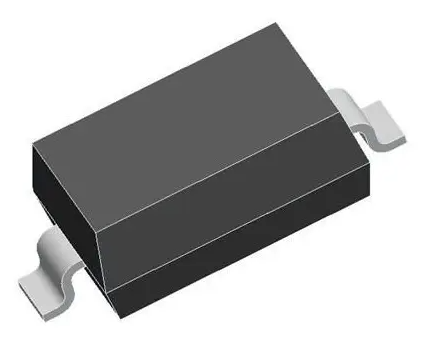A hnstshop.com/product-list/C-D-p1.html" target="_blank" rel="noopener">diode is an electronic component made of semiconductor material that has a single conductivity, allowing only current to pass in one direction. A diode is composed of two different doped semiconductor materials, usually silicon (Si) or germanium (Ge). Among them, the side with high doping concentration is called the P-type region, and the side with low doping concentration is called the N-type region. The materials in the P-type zone mainly use trivalent elements, such as boron (B); The materials in the N-type zone mainly use pentavalent elements, such as phosphorus (P).
In a diode, holes (missing electrons) in the P-type material combine with electrons in the N-type material, forming a positively charged region and a negatively charged region. This binding region is called the P-N junction. When the positive charge region of the P-type region and the negative charge region of the N-type region are formed together, an electric field is formed. This electric field causes free electrons to move from the N-type region to the P-type region, while also causing holes to move from the P-type region to the N-type region. Due to the structure of the diode, current can only flow in the diode when the potential in the positive charge region is higher than that in the negative charge region. This unidirectional conductivity makes diodes important components in circuits.
The parameters of the diode include maximum forward current (IFM), maximum reverse voltage (VRM), forward voltage drop (VF), reverse current (IR), etc. The maximum forward current refers to the maximum current that a diode can withstand during forward operation; The maximum reverse voltage refers to the maximum voltage that a diode can withstand during reverse operation; Forward voltage drop refers to the voltage drop generated by a diode during forward operation; Reverse current refers to the current generated by a diode during reverse operation. These parameters are crucial for selecting suitable diodes for circuit design.
The characteristics of diodes are mainly reflected in their current voltage relationship curve. When the forward voltage is less than the forward voltage drop, the diode is in a cut-off state and the current is almost zero. When the forward voltage exceeds the forward voltage drop, the diode enters a conduction state and the current rapidly increases. Under the action of reverse voltage, the diode will only break down and generate a large amount of reverse current when the voltage exceeds the maximum reverse voltage. Therefore, the forward and reverse voltages have a significant impact on the conduction and cutoff states of diodes.
In addition to unidirectional conductivity, diodes also have fast switching characteristics and rectification functions. Due to the small voltage drop during diode conduction, it can be used as a switching element in circuits to achieve fast switching operations. At the same time, diodes can also be used as rectifiers to convert AC signals into DC signals. This is because in the forward conduction state, the diode only allows current to flow in one direction, thus cutting off the negative half cycle in the AC signal and retaining only the positive half cycle.
In summary, a diode is an electronic component with unidirectional conductivity, composed of P-type and N-type semiconductor materials. Its parameters include maximum forward current, maximum reverse voltage, forward voltage drop, and reverse current. Diodes have fast switching characteristics and rectification functions, which can play an important role in circuits.

